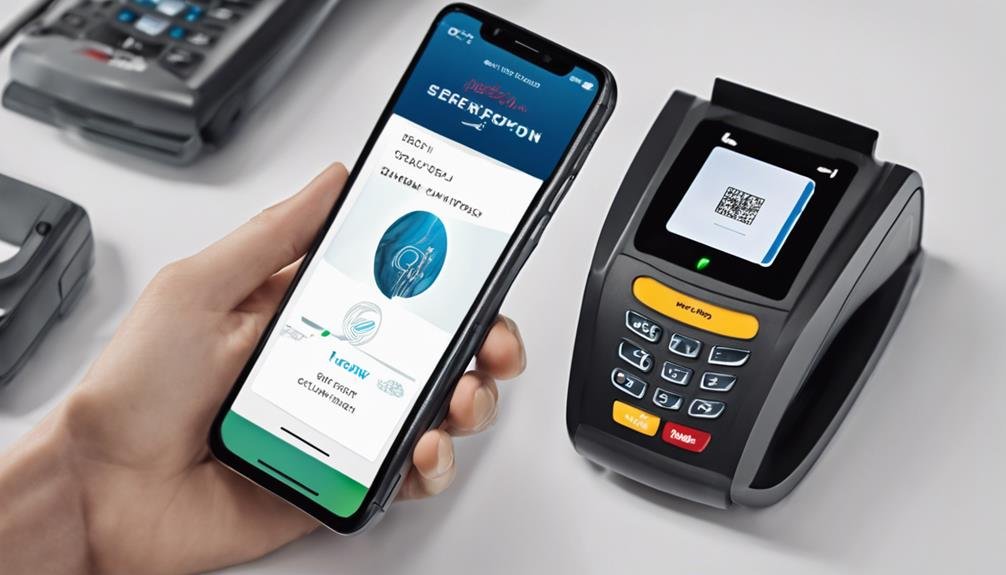To guarantee secure contactless payments:
- Activate NFC for secure transactions.
- Use multi-layer security protocols to reduce risks.
- Add PIN verification for extra security layers.
- Ensure proximity-based authentication to lessen fraud risks.
- Limit criminals by encrypting data and using tokenization.
- Employ anti-theft features on mobile devices for added protection.
- Utilize VPN for secure data encryption on public Wi-Fi.
- Follow PCI standards for secure credit card processing.
Trusted platforms enhance mobile payment security. Remember, more steps can further safeguard your contactless payments.
Table of Contents
Brief Overview of Setting Up NFC For Secure Transactions
- Activate NFC technology in device settings for secure transactions.
- Implement multi-layer security protocols like encryption and tokenization.
- Utilize proximity-based authentication for safe contactless payments.
- Limit criminal use of intercepted information through encryption and tokenization.
- Enhance security with PIN verification for contactless transactions.
Setting up NFC for Secure Transactions
To establish NFC for secure transactions, confirm that your devices support this technology and activate it in the settings for contactless payments. NFC technology is critical in enabling secure payment transactions through contactless means. This technology allows devices to communicate securely nearby, guaranteeing that your payment information is encrypted and protected during transactions. Using NFC chips in contactless cards and devices establishes a secure communication channel with payment terminals, adding a layer of security to your transactions.
When setting up NFC for secure payments, verifying that both your card or device and the terminal support NFC technology to facilitate secure contactless transactions is essential. Once activated, NFC enhances the security features of your payments by requiring physical proximity between the card or device and the terminal, safeguarding your sensitive payment data against unauthorized access. Following these steps, you can confidently secure contactless payments using NFC technology.
Implementing Multi-layer Security Protocols
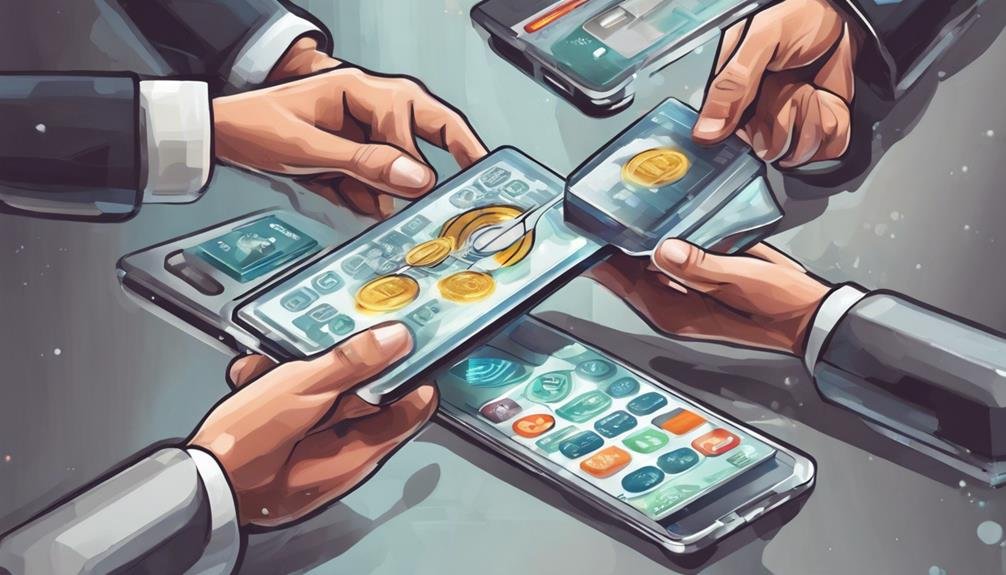
Implementing multi-layer security protocols protects contactless payment transactions against fraudulent activities. Contactless payment technologies incorporate various security measures to guarantee secure transactions. These protocols add a layer of protection, safeguarding your financial information during payments. Having multiple security layers in place greatly reduces the risk of unauthorized access and fraudulent transactions. The encryption and tokenization of data exchanged during contactless payments make it challenging for criminals to misuse intercepted information.
Additionally, some contactless cards may require a PIN entry for further verification before completing a transaction, increasing security. The combination of contactless technology and PIN verification offers enhanced security, making it challenging for malicious actors to exploit vulnerabilities. With these robust security measures, you can confidently use contactless payment methods, knowing your transactions are secure and protected against potential threats.
Ensuring Proximity-based Payment Authentication

Guaranteeing secure proximity-based payment authentication is crucial for enhancing the safety of contactless transactions. Proximity-based authentication relies on Near Field Communication (NFC) technology, necessitating the card or device to be close to the payment terminal for a transaction to occur. This closeness ensures a secure connection, reducing the risk of fraudulent transactions.
Completing transactions only when the card or device is within a few centimeters of the reader minimizes the likelihood of unauthorized access. The added layer of security provided by proximity-based authentication ensures that payments are made intentionally by the cardholder, boosting the overall safety of contactless payments. This method streamlines the payment process and notably decreases the potential for fraudulent activities, making contactless transactions a secure and convenient option for consumers.
Limiting Criminal Use of Intercepted Information

Encryption and tokenization make intercepted information from contactless payments much less valuable to criminals. Encryption technology protects card data by encoding it, making it unreadable to unauthorized parties. This means that even if criminals manage to intercept information during a contactless transaction, they would not be able to decipher the encrypted data. Additionally, tokenization adds another layer of security by substituting sensitive card details with unique tokens for each transaction.
These tokens are useless to hackers as they cannot be reverse-engineered to reveal the original card information. As a result, the risk of fraud from intercepted data is significantly diminished. Contactless transactions are designed to prioritize security, ensuring that personal information remains safeguarded and unauthorized transactions are prevented. By implementing encryption and tokenization in contactless payments, the integrity of cardholder data is maintained, creating a safer environment for digital transactions.
Adding PIN Verification for Extra Security
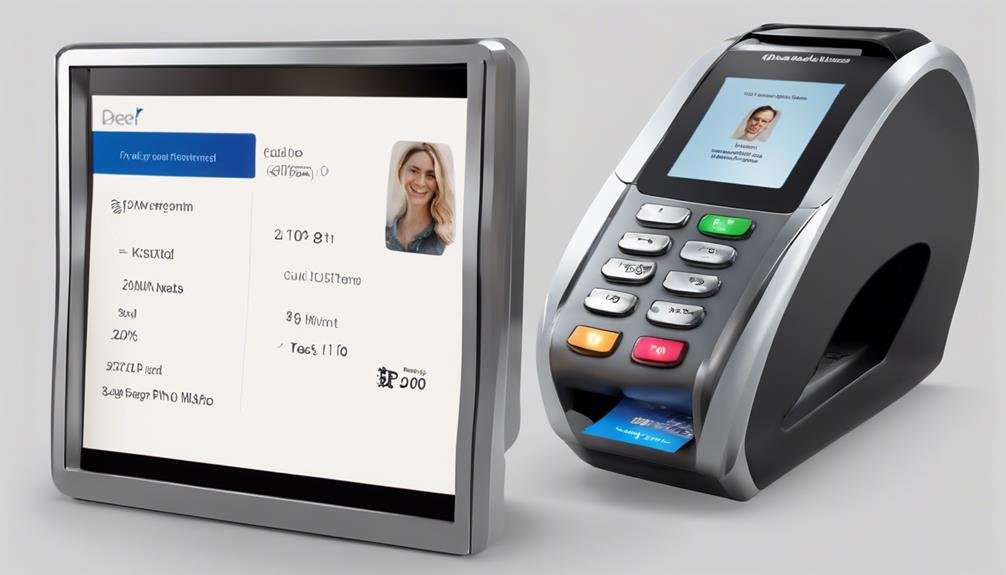
Consider adding PIN verification to your contactless payments for an extra layer of security. By requiring a PIN entry for transactions, you enhance the safeguard against unauthorized use and guarantee secure and authenticated payments. Here are some benefits of incorporating PIN verification:
- Boosted Security: PIN verification adds extra security to your contactless transactions.
- Defense Against Unauthorized Use: It helps protect your funds by preventing unauthorized individuals from using your contactless card.
- Protected Transactions: The combination of contactless technology and PIN entry ensures your transactions are safe and shielded.
- Control Over Transaction Amount: PIN verification allows you to control the transaction amount, adding another security measure.
- Quick and Convenient Payments: Enjoy the speed and convenience of contactless payments while having the added security of PIN entry.
Enhancing User Confidence in Contactless Payments
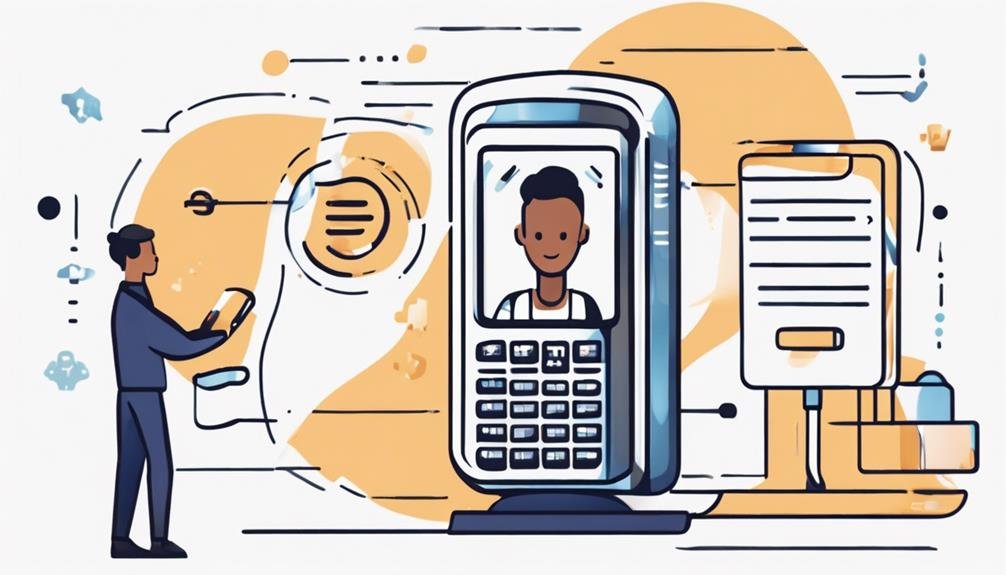
Enhance customer trust in contactless payments by emphasizing the robust security features integrated into the technology. When users grasp the security measures in place, they feel more confident in making contactless transactions. Retailers play a vital role by educating customers about the embedded security protocols in contactless cards and devices. This transparency builds trust and reassures users of the safety of their payments.
One essential security measure that boosts user confidence is the occasional prompt for PIN verification during contactless transactions. This additional step adds a layer of protection without compromising the convenience of contactless payments. By combining contactless technology with PIN verification, the security of transactions is notably strengthened. Providing accurate information about these security features helps users feel more secure and comfortable using contactless payment methods. Ultimately, understanding the security measures in place fosters trust and encourages users to embrace the convenience of contactless payments.
Securing Transactions With Anti-Theft Features
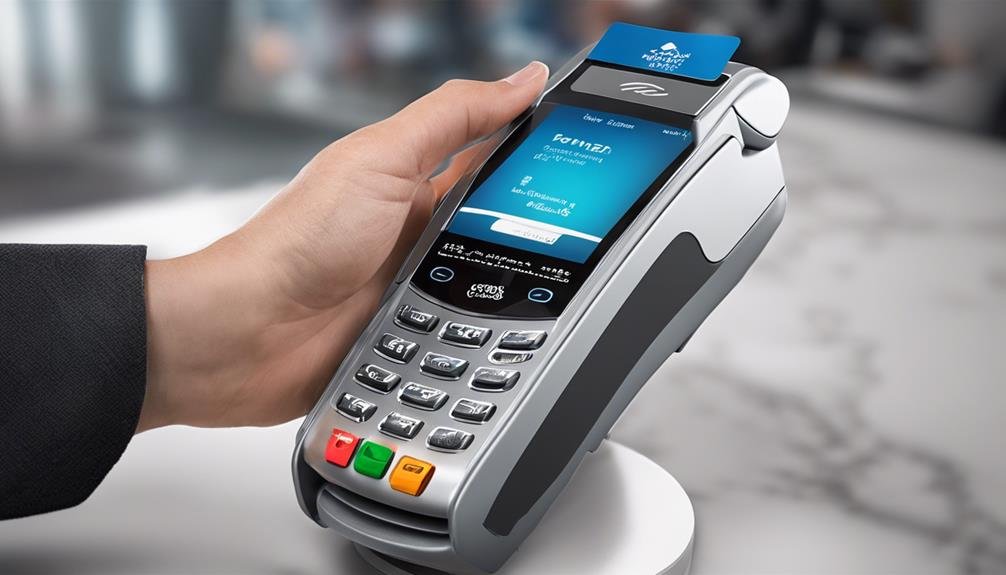
To enhance the security of your transactions, consider utilizing anti-theft features in your mobile payments. These features are important in securing contactless payments and protecting sensitive data during mobile transactions. Here are some key points to help you understand the significance of anti-theft measures:
- Remote locking, tracking, and wiping of devices can safeguard your information.
- Prevent unauthorized access to payment details in case of device loss or theft.
- An additional layer of security is added to your mobile transactions.
- Ability to remotely lock or erase your device to protect personal and financial data.
- Implementing anti-theft features can help prevent unauthorized access to sensitive information.
Protecting Sensitive Data Transmission
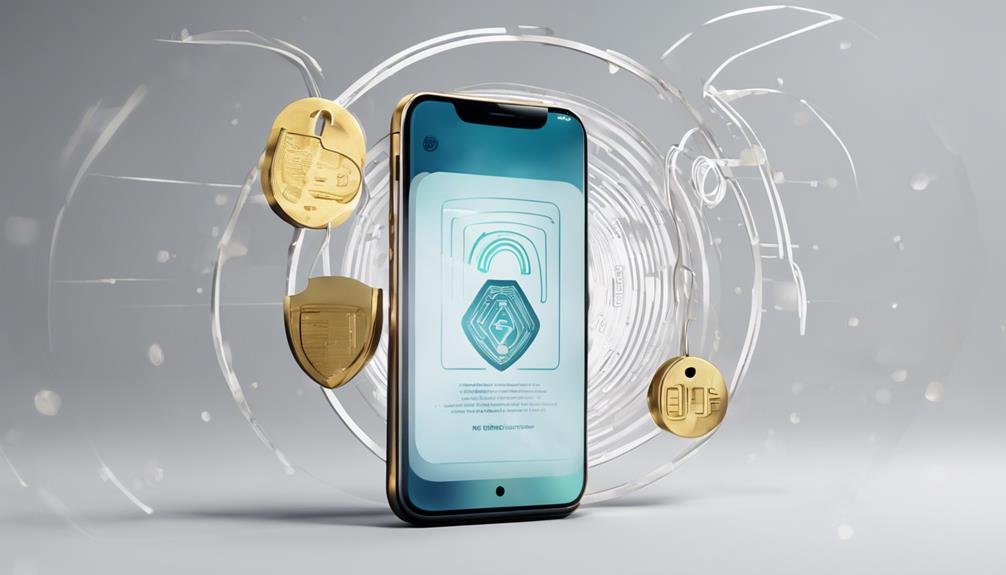
Enhance the security of your contactless payments by utilizing encryption and tokenization to safeguard sensitive data transmission. Encryption encodes data to prevent unauthorized access, while tokenization replaces sensitive information with unique tokens. Point-to-point encryption guarantees that card data remains secure throughout the transaction process, safeguarding it from interception by cybercriminals.
Adhering to PCI standards is essential for secure credit card processing, as these guidelines outline best practices for handling payment data securely. By using trusted platforms for mobile payments, you add an extra layer of protection to safeguard sensitive information from potential threats. Additionally, activating anti-theft features on your mobile devices helps prevent unauthorized access to payment data in case of loss or theft. Prioritizing these measures guarantees that your contactless payments are conducted securely, giving you peace of mind regarding protecting your financial information.
Utilizing VPN for Mobile Payment Security
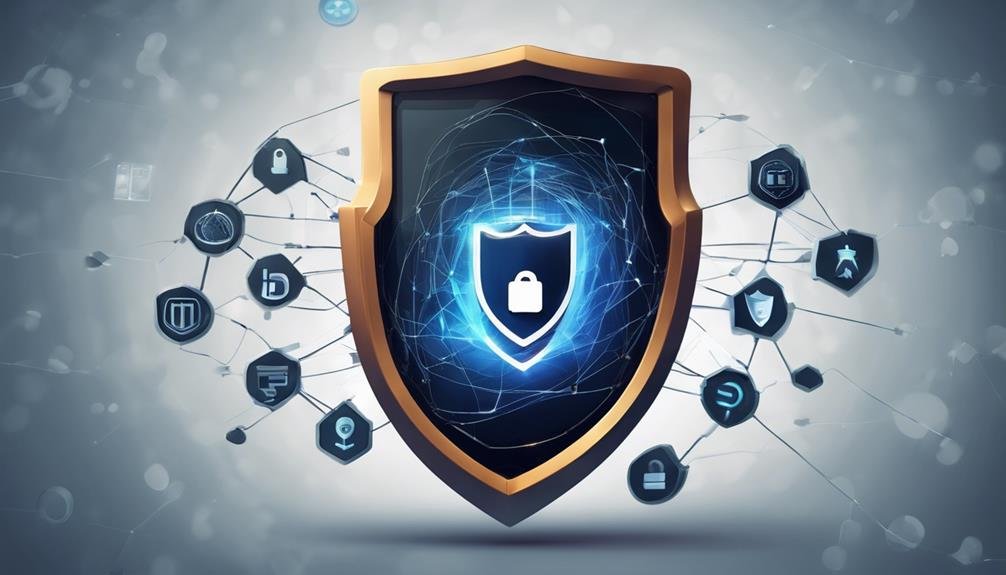
Using a VPN for mobile payment security encrypts your data on public Wi-Fi, keeping your information safe. VPNs create a secure tunnel for transactions, protecting your financial and personal details. Adding a VPN to your password security enhances protection, reducing the risk of unauthorized access.
VPN for Payment Security
When making mobile transactions over public Wi-Fi networks, consider utilizing a VPN to enhance security by encrypting your data. Here are some key points to understand the importance of using a VPN for payment security:
- VPNs create a secure tunnel for your financial data, shielding it from potential threats.
- When paired with a VPN, enhanced password security and anti-theft features can bolster your mobile payment protection.
- Trusted mobile payment platforms often recommend using a VPN to guarantee the Privacy of your financial information.
- Implementing a VPN for mobile payment security is critical to safeguard sensitive data and deter unauthorized access.
- VPNs are important in securing your transactions, offering additional protection against cyber threats.
Mobile Data Encryption
Considering the importance of safeguarding sensitive information during mobile payment transactions, a VPN for mobile data encryption is vital in enhancing your security measures. A VPN (Virtual Private Network) adds a layer of protection by encrypting data transmitted over public Wi-Fi networks, shielding your mobile payment data from potential cyber threats.
Enhancing password security on your mobile devices further safeguards payment information against unauthorized access. It’s also advisable to activate anti-theft features on your mobile devices to help prevent data breaches and unauthorized transactions. By implementing these security measures, you can considerably reduce the risk of your sensitive payment information falling into the wrong hands.
Frequently Asked Questions
How Do Contactless Payment Providers Ensure the Security of Transactions?
Contactless payment providers use encryption protocols, tokenization technology, fraud prevention measures, and secure authentication to secure transactions. Proximity to the payment device is essential for authentication. Continuous monitoring and updates guarantee ongoing protection.
How Are Contactless Cards Secured?
When it comes to securing contactless cards, encryption techniques, and tokenization methods are crucial. Fraud prevention and authentication protocols enhance security. The use of a secure element and near-field communication minimizes risk. Data encryption guarantees protection.
Which of the Following Enables Secure Contactless Payment?
It would help to have encryption protocols, tokenization technology, fraud detection, and biometric authentication to guarantee secure contactless payments. These elements work together to protect your transactions and keep your financial information safe from potential threats.
How Do I Process Contactless Payments?
- Tap your card or device at payment terminals to process contactless payments smoothly.
- Guarantee security with encryption and tokenization.
- Set transaction limits and authenticate customers for added protection.
- Simplify transactions and enjoy the convenience of contactless technology.
Conclusion
To sum up, it’s essential to set up NFC properly, implement multi-layer security protocols, and guarantee proximity-based authentication when securing contactless payments. Transactions can be made safer by limiting criminal use of intercepted information, adding PIN verification, and enhancing user confidence. Utilizing anti-theft features, protecting data transmission, and using a VPN for mobile security all play a role in keeping your payments secure. Remember, staying vigilant is key to safeguarding your financial information.


